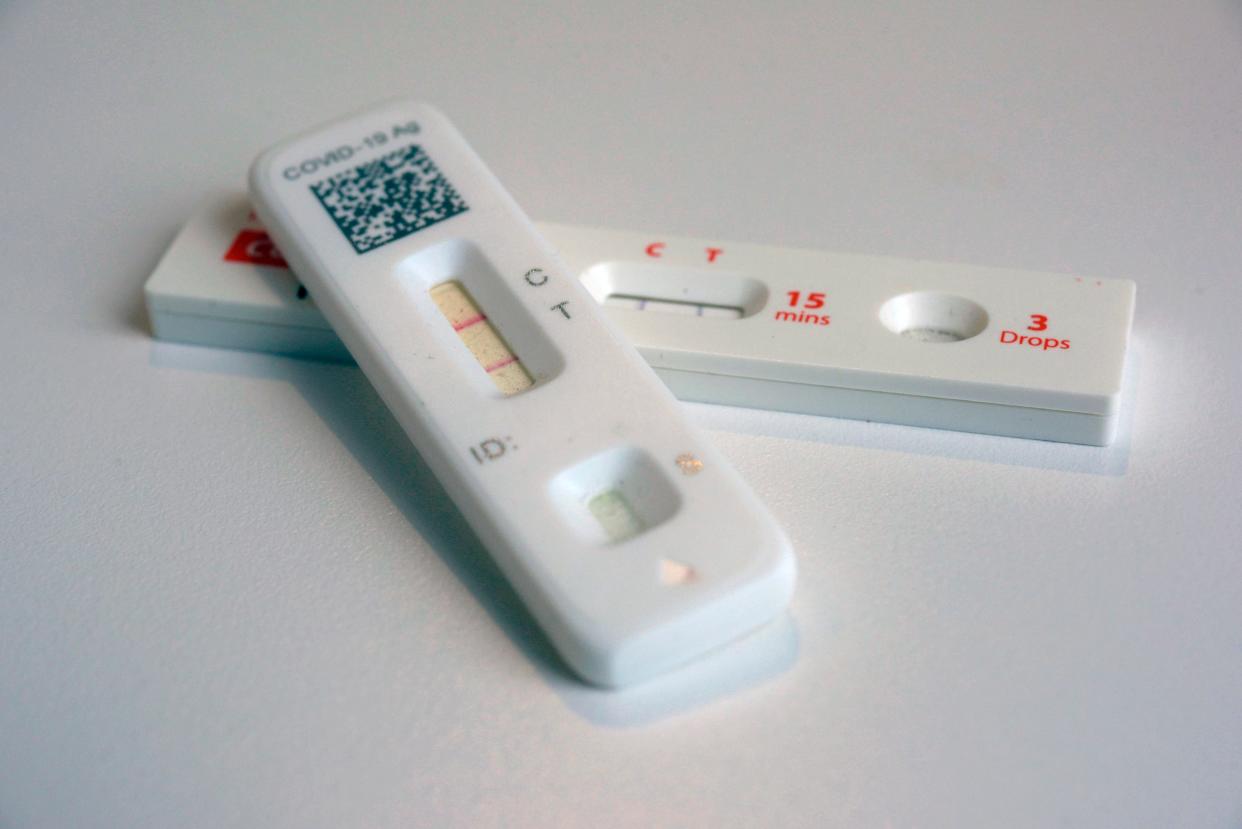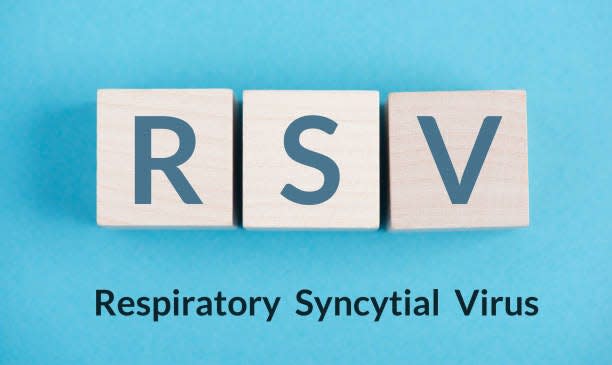Think you have COVID-19, flu, RSV? Here's what to know and do
Data from this winter is reflecting spikes in respiratory and influenza-like illnesses, especially COVID-19, the flu and respiratory syncytial virus, or RSV.
Think you may be sick? Feeling under the weather and have questions? We've got you covered.
What are the COVID symptoms?
Recent reports have shown that the length of COVID symptoms can vary from person to person and may show up differently depending on strains and variants.
Symptoms usually appear 2-14 days after exposure, according to the CDC, and can appear as the following:
Fever or chills
Cough
Shortness of breath or difficulty breathing
Fatigue
Muscle or body aches
Headache
New loss of taste or smell
Sore throat
Congestion or runny nose
Nausea or vomiting
Diarrhea
The CDC will continue to update its list of COVID symptoms as new strains and variants are studied.
What to do if you're exposed to COVID-19
If you were exposed to someone with COVID, the CDC recommends masking immediately.
Day Zero in the timeline is the day of your last exposure, while Day One is the next full day.
For ten full days you should take precautions like wearing a mask and avoiding people who are at a higher risk for complications of COVID-19. The virus can still be developed up to 10 days following your exposure.
At least five full days from your last exposure you should get tested. If the results are negative, continue precautions through Day 10. If positive, follow the CDC's isolation guidelines.
How long should you isolate for COVID?

Isolation recommendations for COVID-19 vary between symptomatic and non-symptomatic people.
Here is what the CDC says:
For those with no symptoms, Day Zero of isolation is the day a patient was tested (not the day their results were received). Day One is the first full day following the test. If symptoms develop within 10 days, the timeline resets and Day Zero is the day of symptom onset.
For those who are symptomatic, Day Zero is the first day of symptom onset, and Day One is the next full day.
People who test positive should stay home for at least five days, which is likely the most infectious period.
Those who tested positive with no symptoms or whose symptoms are improving (including being fever-free for 24 hours) can end isolation after five days. They should continue masking and avoid high-risk individuals through Day 11.
Those who experienced shortness of breath, difficulty breathing or required hospitalization should isolate through Day 10.
What are flu symptoms?
The CDC lists the following as flu symptoms:
fever or chills
cough
sore throat
fatigue
headache
muscle and body aches
runny or stuffy nose
Those with the flu may experience some or all of these symptoms, and not everyone with the flu will have a fever.
How long does the flu last?
Flu symptom onset can range from 2-4 days after infection, and someone with the virus is most contagious in the first 3-4 days after their illness starts. Some people may be contagious one day before symptoms' onset and 5-7 days after becoming sick.
What is the difference between COVID-19 and the flu?
While COVID-19 and influenza are both respiratory illnesses with similar symptoms, they originate from different viruses.
According to the CDC, COVID-19 spreads more easily than the flu and can cause more severe illnesses in some people. Symptoms may also take longer to present in people with COVID-19, and they may be contagious longer.
Though uncommon, testing can reveal if someone is infected with both flu and COVID-19 at the same time. Because the symptoms are similar, testing is recommended to differentiate the two viruses.
What is RSV?

Respiratory syncytial virus is yet another sick season illness to keep an eye out for.
While this is a common respiratory virus that usually only takes a couple of weeks to resolve, the CDC says that infants and older adults are at risk for severe RSV cases that may require hospitalization.
RSV vaccinations for adults 60 and older are typically available at local pharmacies.
RSV symptoms
According to the CDC, RSV symptoms usually appear in stages, and people infected usually show symptoms within 4-6 days of infection.
Symptoms include:
Runny nose
Decreased appetite
Wheezing
Fever
Coughing
Sneezing
Symptoms in young infants may only be decreased activity, irritability and breathing difficulties.
How to prevent respiratory illnesses
The CDC recommends that you be careful about your contact with others and potentially germy surfaces. Avoid close contact with people who are sick and avoid touching your eyes, nose and mouth.
Masks can also help you protect yourself from respiratory illnesses like COVID-19 as the season progresses.
Wash your hands frequently, disinfect surfaces, and, most importantly, stay home if you're feeling sick.
Kaitlyn McCormick writes about trending issues and community news across South Jersey for the Courier Post, The Daily Journal and the Burlington County Times. If you have a story she should tell, email her at kmccormick@gannett.com. And subscribe to stay up to date on the news you need.
More: What's the data say? COVID, flu, RSV spikes rampant in the region
More: Some South Jersey hospitals bring back mask rules as flu, RSV, COVID on rise
This article originally appeared on Cherry Hill Courier-Post: What are the symptoms? COVID, flu and RSV FAQs
